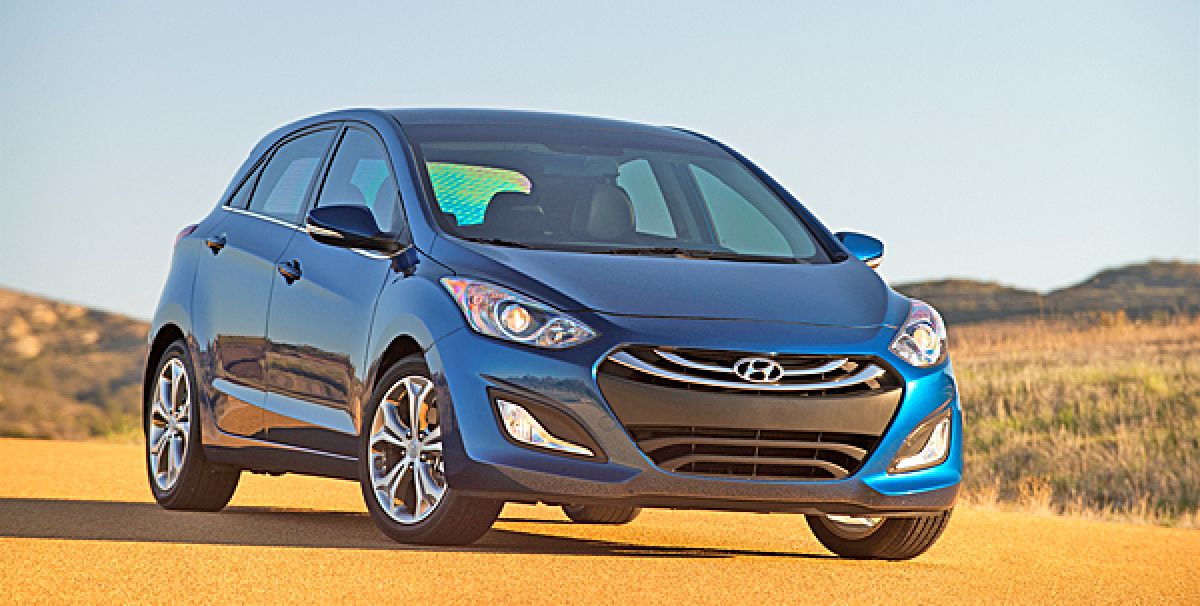This comes on the heels of an upcoming Super Bowl commercial that shows the 2015 Hyundai Genesis is being sold as a guardian angel for inattentive teen drivers. It's trying to package that car as the Korean Volvo but the rest of the brand is falling well short.
Only the Hyundai Elantra gets any recognition from the IIHS. Other cars in its class selected as an IIHS Top Safety Pick + are the Honda Civic 4-door, Mazda 3 (built after October 2013) and the Toyota Prius (built after November 2013).
IIHS is using new criteria for the awards this year. Top Safety Pick requires good performance in the Institute's moderate overlap front, side, roof strength and head restraint tests and, for the first time, good or acceptable performance in the small overlap front test introduced in 2012. The same level of performance in those tests, along with at least a basic rating for front crash prevention, is required for the higher accolade, Top Safety Pick+.
"We've made it more difficult for manufacturers this year," says IIHS President Adrian Lund. "Following a gradual phase-in, the small overlap crash is now part of our basic battery of tests, and good or acceptable performance should be part of every vehicle's safety credentials. We also felt it was time to offer extra recognition to manufacturers that are offering a proven crash avoidance technology."
IIHS has been awarding Top Safety Pick since the 2006 model year and has tightened criteria twice before this year. Top Safety Pick+ was introduced last year to reward automakers that achieved good or acceptable performance in the small overlap test, in which 25 percent of a vehicle's front end on the driver's side strikes a rigid barrier at 40 mph. The test replicates what happens when the front corner of a vehicle collides with another vehicle or an object like a tree or utility pole.
With the small overlap test now incorporated into the basic Top Safety Pick criteria, IIHS is using the Top Safety Pick+ designation to reward manufacturers that provide the next level of safety. This year, that means vehicles that not only protect their occupants in a crash but also have systems that can prevent or mitigate front-to-rear crashes. Front crash prevention, which includes both warning systems and automatic braking, is intended to help inattentive drivers avoid rear-ending a stopped or slower-moving vehicle in front of them.
Of course, the challenge for Hyundai is offering all of the technology needed to prevent or mitigate front-to-rear crashes. (That's especially handy for all of those folks who think they can text and drive.) Start offering that technology in some of the smaller vehicles and profit all but disappears.
Or, does Hyundai start offering all of that technology in its models and profit increases? Could accident avoidance technology be manufactured in enough quantities to make it profitable in small cars? Hyundai could become the true Volvo of South Korea by taking that step.
Maybe that's the step to consider taking because it's getting a strong reputation for fuel efficiency (after fessing up to previous problems) and quality. I'm still not convinced most buyers shop based on safety. They're glad it's there but it's not a primary concern.
There's hope Hyundai will have a second car on the list next year, pending details on its structure: the 2015 Hyundai Genesis. It's going to have a "radar-based automatic emergency braking system." That's going to make a huge difference in terms of overall safety. It can't arrive soon enough on the other cars in the Hyundai lineup.





